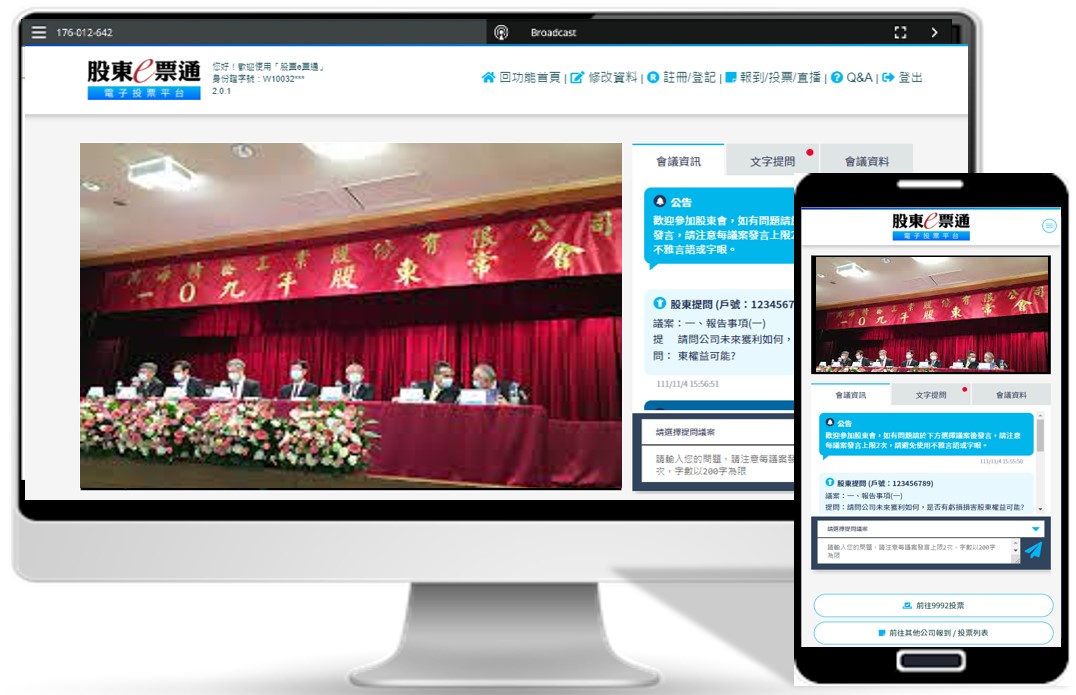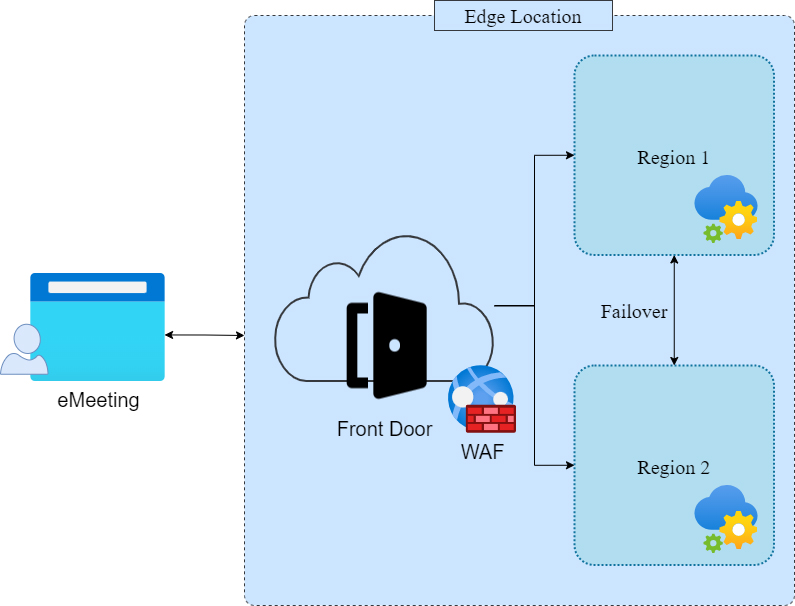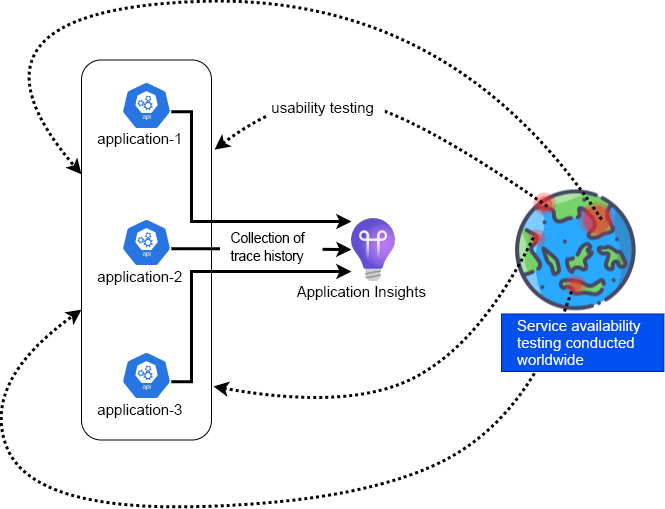The severity of COVID-19 resulted in difficulties and uncertainties for public companies to convene regular meetings of shareholders in 2021. Therefore, the FSC mandated Taiwan Depository & Clearing Corporation (TDCC) to construct the “Video-Assisted Shareholder Meeting Platform.” After all the annual shareholder meetings concluded, a discussion regarding the platform’s revision was conducted, and the resolution to implement a construction project of the “Shareholder Virtual Meeting Platform (eMeeting)” was reached. Since April 1, 2022, the platform has been provided for public companies to hold video-assisted shareholder meetings (hybrid) or virtual shareholder meetings (virtual only).
The traits of the eMeeting service are the stark distinction between the low season and peak season and the capacity to accommodate a large number of attendees swarming online in a short time. In fact, the traits of cloud computing completely meet the requirements of the service from the platform, so cloud computing is chosen for constructing the eMeeting service with the majority of PaaS service as the infrastructure. With the advantages of cloud computing, including security, extensibility, reliability, global access, flexibility, and cost-effectiveness, service of high availability can be created. The description of the service’s architecture in terms of cloud computing is as follows.

Figure1: eMeeting
eMeeting takes Front Door, which is provided by Azure, as the gate of the service. The structure is illustrated in figure 2. It plays the role of AP Getway, connecting each service component of eMeeting. It uses Front Door’s router design tool, allowing different service components to be bound under the same domain name, and the router integration can be completed efficiently. Also, plenty of Edge Location nodes are constructed in Front Door to provide the CDN system and accelerate users’ acquisition of the browsed contents. Regarding security level, Front Door also integrates defensive systems such as DDoS and firewall, which can drastically reduce information security system attacks and achieve the cost-effectiveness of making cloud service enjoyable. In addition, the cross-region failover system constructed by the use of Front Door can automatically detect service status. Once a service in a single spot fails, the service will be automatically switched to the region that functions normally to increase the services available.
 Figure 2: the Front Door Architecture of eMeeting
Figure 2: the Front Door Architecture of eMeeting
In terms of reliability, due to the program deployment where eMeeting is divided among the operation of multiple PaaS service, including App Service and App Function, the trace of the data streams among each component becomes difficult. For the resolution to the issue, each service component programmed for eMeeting is concatenated to Application Insights. Through the provided data tracing function, the threshold for data stream control is lowered. In addition, Application Insights will collect the “quantitative” and “telemetric” data of each service shown in figure 3 and provide smart tracing tools for developers to troubleshoot efficiently.

Figure 3 Application Insights Structure
Availability is one of the essential factors for service. What’s more, eMeeting serves as the meeting platform between shareholders and companies during the pandemic, and the requirement for availability cannot be ignored. In Azure’s cloud service, through the availability testing service provided by Application Insights, the construction of service availability testing and warning system can be done more easily. Moreover, as for availability testing, Application Insights also takes advantage of its “global access” on the cloud to provide more comprehensive services. In the availability testing of eMeeting, we define five regions (from all over the world) to see if the constant frequency monitoring service functions normally, and the monitored frequency can be set in Application Insights. As a result, we can conduct more frequent availability testing in the peak season of the service to ensure stable function.
The further discussion is on how eMeeting employs two traits of cloud service: flexibility and cost-effectiveness. In terms of eMeeting, the peak time is usually business hours on regular working days, so the amount of resource used can be estimated based on the number of meeting attendees of the day. After the estimate is done, resource adjustment can be conducted through the automated script. In addition to regular resource adjustments, Azure also provides the so-called dynamic adjustment so that we can conduct flexible increases and decreases in Instance operation according to some hardware data. For example, when the CPU constantly operates at 70% of its use rate per minute, one more Instance is added through dynamic increase, and vice versa. Therefore, we can maintain the loading level of the entire service through dynamic resource adjustment.
All in all, there are plenty of advantages to cloud service, such as rapid deployment, global service monitoring, hardware that doesn’t idle, and non-payment for resources not in use. However, cloud service is constructed on an open online environment, so there should be more caution for the information security setting. Cloud service providers (CSP) should be more vigilant for information security compared with other companies. For example, there should be corresponding protective systems for account protection systems as well as the storage and retrieval permission of software and hardware. It is recommended that related documents regarding cloud service should be read closely before the service is initiated. In this way, the service can be efficient and secure.

